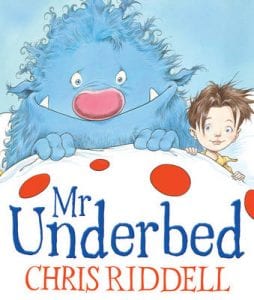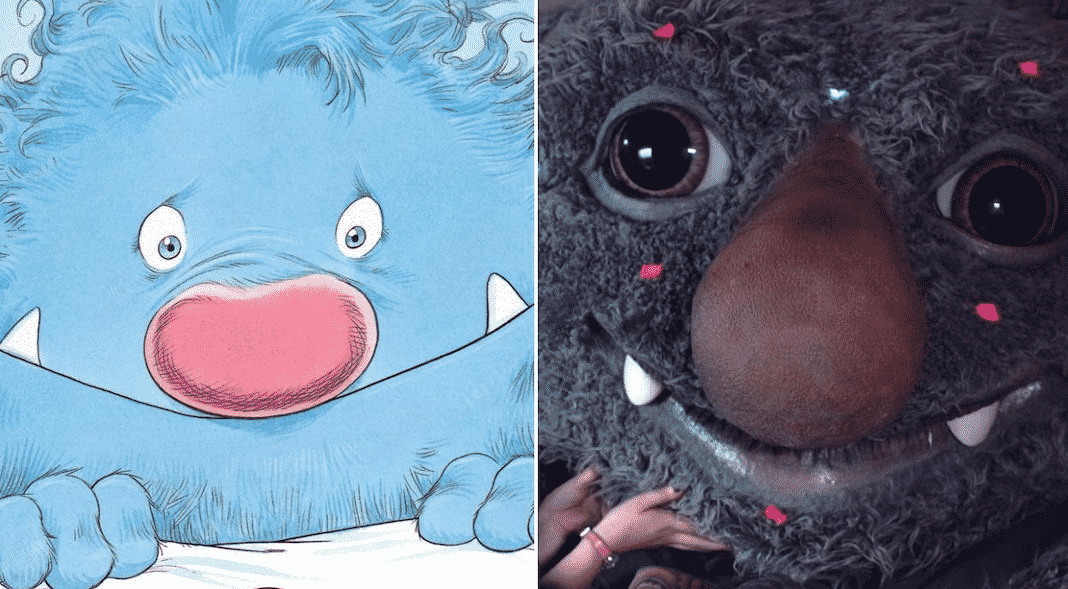The Christmas Monster Plagiarism Story
A battle between two friendly monsters...
In November 2017, John Lewis, a UK retailer, released a holiday ad featuring Moz the Monster, a monster that hid under the bed of a child. However, though the child initially wanted to be rid of him, the two forged a friendship that many found extremely touching.
However, the story of the ad took a less sentimental turn when, shortly after first airing, illustrator Chris Riddell accused John Lewis of plagiarizing his work.
According to Riddell, Moz bore a strong resemblance to the monster in Mr. Underbed, a 1986 children’s book he published that had been re-illustrated in 2009.
To Riddell, the similarities were striking. Though he admitted that the story of a monster hiding under the bed well predates both works, he took issue with the general appearance of Moz and some of his specific actions, such as shaking the bed and the young boy using earmuffs to quell the sound.
On Tumblr, Riddell escalated his war of words further saying that
In this age of shrinking publicity budgets it is very generous of John Lewis to devote their Christmas advertising campaign to my 1986 picture book- seen here in the 2009 edition.
Chris Riddell
Riddell was also supported by his publisher, Anderson Press, who planned a campaign “seeking justice” for Mr. Underbed as they were aiming to go head-to-head, or monster-to-monster, with the book version of the ad.
Though Riddell received widespread public support, especially from other authors and illustrators, he said that he would not be seeking out legal action. According to Riddell, “Instead, I hope that advertising agencies, and the big companies they work for, take care to credit creative people whose work they might reference.”
John Lewis eventually responded to the allegations, defending the ad in a statement that said:
The story of a big hairy monster under the bed which keeps a child from sleeping is a universal tale that has been told many times over many years. Ours is a Christmas story of friendship and fun between Joe and Moz the Monster, in which Joe receives a night light that helps him get a good night’s sleep. The main thrust of our story is utterly different to Chris Riddell’s.
John Lewis statement to The Guardian
In the end, the issue, largely went away. However, the story did have a happy ending for Riddell as Mr. Underbed saw a resurgence in sales, selling out completely and requiring an emergency fresh print run to fill shelves.
So, while there may never have been a real definite conclusion to the story, it seems likely that both sides were happy with the ending. John Lewis created a mascot that is still finding love a year later and Riddell sold a lot more copies of his work.
But this leaves a nagging question: Was there likely plagiarism?
Breaking Down the Allegations

For Riddell, the allegations are fairly simple. Moz is a very similar and behaving monster to Mr. Underbed. Both feature blueish skin, large red noses and smiles featuring two fangs (albeit in opposite directions).
From Riddell’s perspective, that made it likely that Moz was at least inspired by, if not outright plagiarized from, Mr. Underbed.
But, if Riddell had taken his case to court, it likely wouldn’t have made it very far. While the similarities between the two are certainly notable, they likely aren’t protectable under copyright and they aren’t even unique to the characters involved.
As one blog noted, blue monsters with big red noses were a staple of Sesame Street long before either work was released. Furthermore, as Riddell himself noted, many elements of the stories, including the monster hiding under the bed and keeping the child awake, are extremely old in their origins.
In short, there are simply too many differences and too few similarities protected by copyright to believe this case would have done well. A similar conclusion was reached by Advertising Week.
However, copyright does not equal plagiarism and it entirely possible to plagiarize without infringing. Despite that, it doesn’t seem like there’s enough there to truly convict either.
As I showed back in September, it’s very easy to concoct a plagiarism story, even unintentionally, when you look only at the similarities. Riddell is extremely familiar with his work and, understandably, sees the pattern of it in other works. His belief is, in my estimation, genuine.
As for others, when you look at the similarities between two works but don’t pay equal attention to the differences, it’s easy to see plagiarism where there is none. The two works, as John Lewis noted, are fundamentally different.
The John Lewis commercial focuses on the friendship between the two, which culminates in Moz buying the child a nightlight so he can sleep at night and stay awake during the day. In Mr. Underbed, keeps his child awake but through snoring and the discovery that other creatures are also looking for a place to sleep.
While it’s entirely possible that John Lewis did draw heavily from Mr. Underbed, it’s impossible to prove with the evidence in hand. The similarities are, on the whole, very broad and there are pronounced differences.
While I wouldn’t say this is a plagiarism scandal produced from thin air, which is what I did previously, it’s certainly not an open and shut case. From where I sit, calling John Lewis or their ad agency a plagiarist is a stretch, they still should have avoided the similarities. Simply altering the appearance of Moz could have prevented the whole thing.
Still, it seems like things worked out well enough for both. The Moz campaign was a success and Riddell’s book sold exceptionally well.
Perhaps, this story is something of a Christmas miracle.
Bottom Line
One of the allegations we constantly hear when someone accuses a popular work of plagiarism is that they are just seeking attention or profit. To be clear, this is NOT Riddell’s story. Not only is he a successful illustrator and political cartoonist, but the plan to ramp up book sales came from his publisher.
Still, if accusers are looking for fame and sales, they rarely get it, even when they are found to be correct. Plagiarism accusers, in general, are forgotten, even if we remember the person they accused is a plagiarist. After all, do you remember who originally accused Shia LaBeouf of plagiarism? It was Daniel Clowes.
To be clear, I’m as guilty of this as anyone. I had to look that up too.
The point is that this is one of the rare occasions where David took on Goliath in a plagiarism battle and actually did get increased sales.
Still, the fact that both monsters still seem to be well-loved means that, most likely, the differences between them outweighed their similarities to the public. If nothing else, it means that there’s room enough for two monsters under the bed.
Want to Reuse or Republish this Content?
If you want to feature this article in your site, classroom or elsewhere, just let us know! We usually grant permission within 24 hours.
